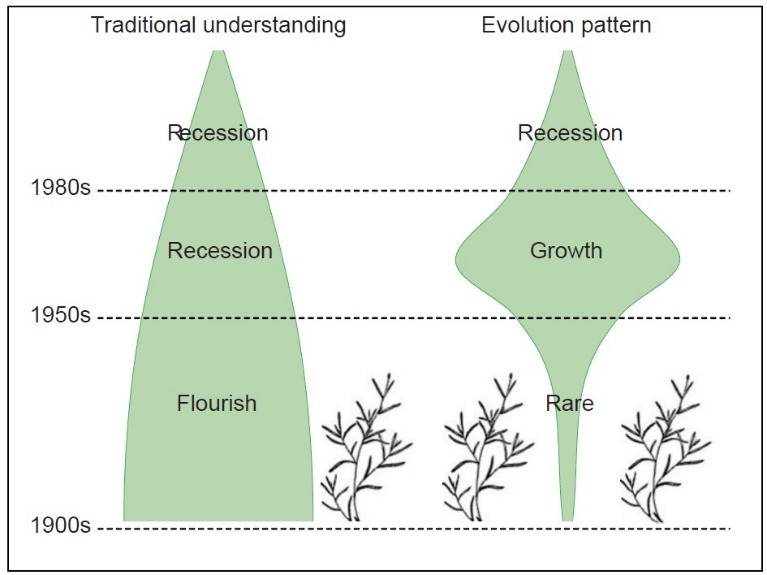How have macrophyte changed in East China’s shallow lakes over the past century
In recent years, China’s eastern plain lake region have experienced severe degradation and biodiversity loss, which seriously restricts regional sustainable development. How to restore the degraded lakes from turbid water to clear water is the core goal of lake management, and effective restoration of macrophyte communities (especially submerged macrophyte) in the lake ecosystem is one of the key processes.
Improved understanding of the long-term trajectories, features, and patterns of submerged macrophyte degradation is an important prerequisite for establishing the goals and approaches of macrophyte restoration, which can provide valuable information for lake ecological restoration and management.
However, most of the research data (including field survey data and monitor data) in this region only cover the recently decades (<50 years), with little information about the macrophyte change in longer periods with less human disturbance, which restricts our systematic understanding of the long-term evolution of macrophyte. In addition, most studies focused on the changes of macrophyte in a single lake, lacking a comprehensive comparison between different types of lakes, especially for the long-term evolution patterns and features at a regional scale.
Currently, there is still controversy in the understanding of the evolution process of submerged macrophytes before the 1980s (especially before the 1950s), from the perspective of different methods. A systematic combination of various methods is needed to let them complement and verify each other, to revealing the more complete, multi-level, and more accurate information of macrophyte change.
Under these circumstances, in the support of the National Key Research and Development Program of China, a group of researchers from Nanjing Institute of Geography and Limnology of the Chinese Academy of Sciences (CAS), obtained the long-term change process of submerged macrophyte of 18 shallow lakes and 1 lake group in eastern China over the past 100 years, and provided quantitative change data of 14 typical lakes, by comparing and analyzing the field survey records, remote sensing image records, and paleolimnology records. The study was published in Science China Earth Sciences and its Chinese version.
The researchers proposed the possible evolution pattern (less-more-less) of submerged macrophytes in the eastern plain lake region over the past 100 years, which is different from the traditional understanding that submerged macrophytes are abundant in the early 20th century and then degrading gradually through time (more-less). On this basis, they summarized the incomprehensiveness of traditional understanding and analyzed the driving mechanism of the proposed evolution pattern.
The study provides new perspectives about the long-term evolution process of macrophyte in shallow lakes, and it has important practical significance for protection and restoration of lake macrophyte, especially for establishing the historical natural condition and the reference condition.

Traditional understanding and possible evolution pattern of the evolution process of submerged macrophytes in shallow lakes in eastern China over the past 100 years
Journal paper link: https://doi.org/10.1360/SSTe-2020-0275
https://doi.org/10.1007/s11430-020-9806-9
Contact
TAN Lei
Nanjing Institute of Geography and Limnology (http://english.niglas.cas.cn/)
E-mail: ltan@niglas.ac.cn
